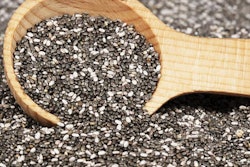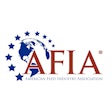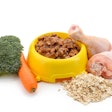
During a recent phone conference attended by both regulatory and industry personnel, a reference was made to one of the Compliance Policy Guides (CPG). However, at least some of those on the call were unfamiliar with this series of documents available from the U.S. Food and Drug Administration (FDA). For those who may not have been previously aware of their existence, the CPG can be an invaluable tool in understanding the agency's perspective on many pet food issues.
What are the CPG?
The Manual of Compliance Policy Guides can be found on the FDA's web site. Many of the CPG in the manual are explanations of the FDA's interpretation of the laws and regulations pertaining to a particular product or issue. Actually, the CPG are not intended as guidance for industry, but rather as directives to FDA personnel. They advise FDA inspectors and others operating in the field when and why enforcement action may or may not be indicated. However, that does not mean the pet food industry cannot also glean useful insight as to how the agency is likely to respond to a given situation.
CPG regarding ingredients and animal feed
The CPG most pertinent to the pet food industry are in Chapter 6: Veterinary Medicine. Most of them pertain to animal drugs, and a number of those that are related to animal feeds are focused on medicated livestock feed issues. Still, quite a few are very relatable to pet foods.
A number pertain to the FDA's position on rendering and other use of materials that may be unsuitable for use in food or feed. For example, under very specified conditions to ensure safety, materials from "animals that died by means otherwise than slaughter" may go into animal feed. This does not grant free reign to companies to use whatever they want. Rather, the materials must be properly processed by rendering or other means to ensure they are free from pathogenic microorganisms.
Also, the materials cannot otherwise be in violation of the law; e.g., they can't contain violative drug residues or other contaminants such as potentially harmful chemicals. Also, the CPG make clear that meat from "4-D" (i.e., dead, dying, diseased or disabled) animals that are not cooked are inherently adulterated and subject to enforcement action.
There are other CPG specifying the circumstances and conditions that must be met to allow other unacceptable foodstuffs, such as moisture-damaged grains or materials contaminated with animal droppings, to be salvaged for inclusion in animal feed. Again, these provisions do not allow indiscriminate use at the discretion of the manufacturer. Rather, because each incident of contamination may have unique issues that could impact safety, requests for diversion of materials into animal feed generally require review and approval by the FDA on a case-by-case basis.
CPG regarding various types of pet food
Some CPG that are specifically pertinent to pet foods have been discussed in this column in the past. For example, CPG Sec. 690.150 outlines the agency's perspective on veterinary-directed (aka "therapeutic") foods for pets (see Petfood Industry, June 2016). While any pet food whose labeling bears a claim to treat, prevent or otherwise affect a disease or condition can be subject to action as an adulterated drug, the agency understands the potential benefit to the animal when such products are used appropriately. Therefore, the FDA outlines the conditions under which it is not inclined to initiate enforcement action against a product, even though not wholly compliant with applicable law.
Another CPG (Sec. 690.800) explains the rationale for action against any pet food found to be contaminated with Salmonella (see Petfood Industry, June 2013). Briefly, even if the particular strain of Salmonella organism found in the pet food is not pathogenic to dogs or cats, there is still significant potential for contact with people that may be susceptible to infection. Hence, to protect public health, the presence of Salmonella in pet food, regardless of serotype, is actionable.
Other pet-related CPG
Other pet food-related CPG include how water added to a canned pet food must be declared in the ingredient list, and an explanation of the need for dog and cat nutritional supplements to contain meaningful amounts of the nutrients they purport to contain. Some CPG are the result of a particular incident, where the FDA sets a precedent that may be applicable to other cases; for example, how fish ingredients comprised of different species must be declared on the label.
Other chapters may also provide insight about pet food labeling and regulation. For example, Chapter 5: Food, Colors and Cosmetics offers guidance on country of origin declarations, the use of a foreign language on the label, metric declarations and action levels for "unavoidable" pesticide residues. Chapter 1: General covers many issues relating to inspection, import/export and other regulatory matters.

















